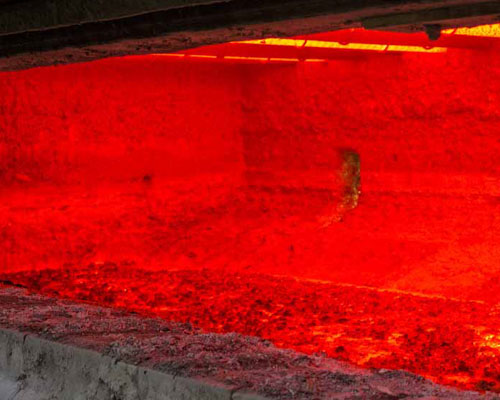The inclusions in the aluminum melt include solid inclusions such as carbides, nitrides, oxides, hydrides, borides, and metal inclusions such as iron, silicon, zinc, and manganese. Among them, Al2O3 is the main component, accounting for 95% of the inclusions. the above. The size of non-metallic inclusions in the aluminum melt is between several to tens of microns, which is very harmful.
The non-metallic oxide inclusions and the aluminum alloy material have different performance parameters such as elastic modulus, hardness, expansion coefficient and other performance parameters. Under the action of external force, stress concentration is easily generated at the sharp corners of the oxide inclusion phase, which cuts the matrix structure and makes the product Leaking or easy to rot candles, significantly reducing mechanical properties and stress corrosion resistance. The presence of slag will also reduce the fluidity of the alloy and the ability to fill the mold, and increase the tendency of casting defects. Increase the inhalation tendency of the aluminum melt, and block the diffusion and precipitation of the gas, and promote the formation of secondary porosity and voids during the heat treatment process.
The aluminum casting flux removes the slag inclusion in the aluminum alloy melt mainly through three ways of adsorption, dissolution and compounding.

The dissolution is mainly achieved by adding chemicals that can dissolve with the slag in the flux. According to the similar physical and chemical properties, the dissolution is realized, and then removed with the flux. For example, Na3AlF6 can dissolve Al2O3. The chemical reaction is through the chemical reaction between the flux and the slag inclusion to generate other easily removable compounds to achieve the purpose of removal, such as Na2SiF6. The Na3AlF6 and AlF3 generated by the reaction of the remaining Al2O3 can be refined through other mechanisms.
AdTech’s refining flux is with appropriate heat treatment and screening, it turns to uniform size, which is conducive for transferring in refining jar with(N2 or Ar) gas as carrier to the bottom layer of molten aluminum, which fully solves the traditional problem of tube plugging, failure to uniformly dispersing to ensure quality casting.

